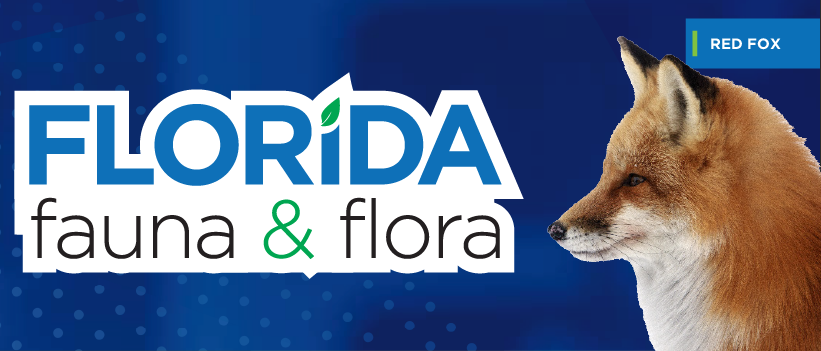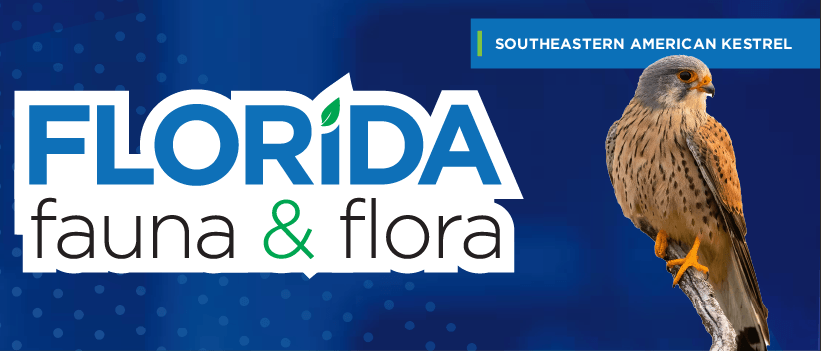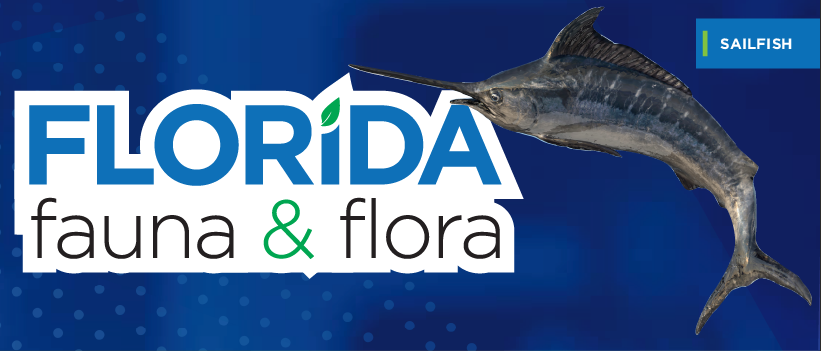Florida Fauna & Flora – Red Fox
Florida Fauna & Flora – Red Fox
Red foxes are the size of a small dog and weigh 10 to 15 pounds. Not including their long, bushy tails, they measure about 2 feet long. Red foxes have red hair that varies from rust-colored to golden-red, white bellies, black ear tips and legs. Their hairy, red, bushy tails usually have a white tip.
This fox is primarily nocturnal, but you may find it feeding during the day. It is most active at dawn and dusk. Its diet includes rabbits, mice and rats. It may kill more than it can eat and bury the extra for a later meal.
Red fox pairs usually mate for life. Breeding takes place in late fall or winter, with gestation lasting 53 days. An average of 5 blind, helpless pups are born per litter that nurse for 2 months and live and learn from adults for about 6 months.
Red foxes are a naturalized but not native Florida animal. A naturalized animal has moved into an area and adapted, created a stable or expanding population, and does not require aid for survival or reproduction.
Fun Fauna Fact: Gray foxes are often confused with red foxes because much of their hair is red. Red foxes are found in fields and weedy pastures, while gray foxes are more often found in heavily wooded areas.
Source: Florida Fish and Wildlife Conservation Commission
Read the full November 2021 SECO News online.





